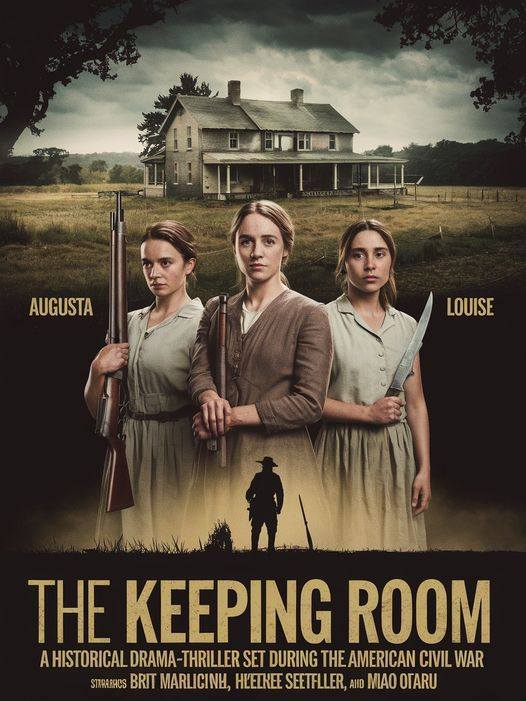The Keeping Room (2014): A Gritty Tale of Survival and Resilience

The Keeping Room, directed by Daniel Barber, is a gripping historical drama-thriller set during the waning days of the American Civil War. The film centers on three women—Augusta (Brit Marling), her younger sister Louise (Hailee Steinfeld), and their enslaved house servant Mad (Muna Otaru)—as they struggle to survive on their isolated rural farm in the absence of men who have gone to war. This tense and atmospheric narrative explores themes of gender, survival, and resilience against the backdrop of a war-torn America.
Plot Summary
The film begins with Augusta, the determined and resourceful eldest sister, taking charge of the farm’s upkeep and protecting her family from the chaos of the outside world. Louise, though spirited, is inexperienced and often at odds with her older sister’s pragmatic outlook. Mad, the enslaved woman caught in the orbit of their lives, proves to be a vital part of their survival team, showcasing strength and resourcefulness as an equal member of the household.
The women’s precarious peace is shattered when two rogue Confederate soldiers (Sam Worthington and Kyle Soller) stumble upon their home. What begins as an encounter with unwelcome guests quickly escalates into a life-threatening siege, forcing the women to confront their deepest fears and rally their courage to defend their lives and dignity.
Themes and Symbolism
- Gender and Survival: The film sheds light on the overlooked struggles of women during the Civil War, focusing on their fight for survival in a world where they are often seen as prey. Augusta, Louise, and Mad’s determination to defend their home and themselves showcases the strength and resilience of women in the face of violence and adversity.
- Power Dynamics and Oppression: The complex relationship between the women, particularly between Augusta and Mad, reflects the racial and social hierarchies of the time. However, their shared struggle against the soldiers challenges these divisions, emphasizing unity and shared humanity in the fight for survival.
- The Brutality of War: The Keeping Room highlights the collateral damage of war, showing how it affects not only soldiers but also those left behind. The threat posed by the soldiers serves as a microcosm of the chaos and destruction wrought by the Civil War on the home front.
Performances and Cinematic Style

Brit Marling delivers a standout performance as Augusta, embodying strength and vulnerability with equal conviction. Hailee Steinfeld portrays Louise with a mix of youthful naivety and emerging resilience, while Muna Otaru brings depth and quiet power to the role of Mad. Sam Worthington and Kyle Soller are chillingly effective as the soldiers, embodying the dangers of unchecked aggression.
The film’s cinematography, handled by Martin Ruhe, enhances the story’s tension and atmosphere. The desolate landscapes and dimly lit interiors evoke a sense of isolation and foreboding, mirroring the characters’ emotional states. The minimalist score complements the slow-burning tension, creating a palpable sense of dread.
Reception and Legacy
The Keeping Room has been praised for its unique perspective on the Civil War, focusing on women’s experiences in a time of upheaval. Critics have highlighted its strong performances, gripping narrative, and evocative visuals. While the film does not shy away from depicting violence and trauma, it also offers a powerful message of resilience and solidarity.
By centering on the overlooked voices of women, The Keeping Room adds a fresh and compelling layer to Civil War narratives, making it a must-watch for fans of historical drama and character-driven storytelling.











